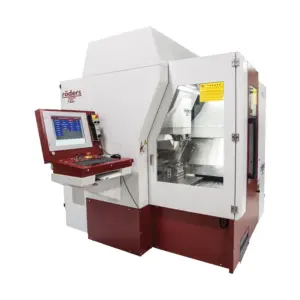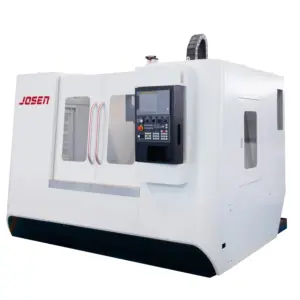The origins of numerical control (NC) machines date back to the 1940s when motors were first used to automate the movements of existing tools. With technological advancements, these mechanisms evolved from being controlled by analog computers to digital ones, leading to the development of Computer Numerical Control (CNC) machining.

Today, most CNC machines are entirely electronic. Common CNC-operated processes include ultrasonic welding, hole-punching, and laser cutting. Key machines used in CNC systems include:
CNC Mills
CNC mills operate on programs consisting of alphanumeric prompts that direct the movement of parts across various distances. These programs can use G-code or custom languages created by manufacturing teams. Basic mills operate on a three-axis system (X, Y, and Z), but newer models can accommodate three additional axes.
Lathes
Lathes cut materials in a circular motion using indexable tools. CNC lathes perform these cuts with high precision and speed, enabling the creation of complex designs that manual lathes cannot achieve. Like CNC mills, lathes are programmed with G-code or proprietary code, though they typically use a two-axis system (X and Z).
Plasma Cutters
Plasma cutters use a plasma torch to cut materials, primarily metals, but can also be used on other surfaces. The plasma is generated by combining compressed-air gas with electrical arcs, creating the necessary heat and speed to cut through metal.
Electric Discharge Machines
Electric Discharge Machining (EDM), also known as spark machining or die sinking, shapes workpieces with electrical sparks. In EDM, electrical discharges between two electrodes remove material from the workpiece. As the gap between the electrodes narrows, the electric field intensifies, allowing current to pass and erode the workpiece. EDM comes in two main types:
Wire EDM: Uses spark erosion to cut conductive materials.
Sinker EDM: Involves an electrode and workpiece submerged in dielectric fluid, forming shapes through electrical discharges.
Debris from the machining process is removed by a liquid dielectric in a process called flushing, which prevents further electrical charges once the current stops.
Water Jet Cutters
Water jet cutters use high-pressure water to cut hard materials like granite and metal. Sometimes, abrasive substances like sand are added to the water for more effective cutting. Water jets are ideal for materials that can’t withstand the heat generated by other CNC equipment. Industries like aerospace and mining use water jets for precise, cool cutting that doesn’t alter the material’s properties.
Additional CNC Applications
CNC machines are capable of producing intricate cuts in metal for industrial products. They manufacture a variety of detailed and accurate items, including aerospace parts, automotive components, wooden decorations, and plastic consumer goods. CNC systems often incorporate other tools and machinery such as:
- Embroidery Machines
- Wood Routers
- Turret Punchers
- Wire-Bending Machines
- Foam Cutters
- Laser Cutters
- Cylindrical Grinders
- 3D Printers
- Glass Cutters
Due to their versatility, CNC machines can produce an almost limitless variety of goods quickly and accurately. Complex cuts at different levels and angles can be executed within minutes, provided the machine is correctly programmed. This precision ensures that the final product meets the desired specifications.
Why Choose Us for CNC Manufacturing

With over 15 years of experience in the machining industry, our expert team, all CNC-certified, is dedicated to delivering exceptional value to our clients. We specialize in custom machining parts and components and can build machinery tailored to your company’s specific needs.
Explore our CNC precision machine services to see how we can assist you. If you have any questions or are ready to partner with us, please contact us.